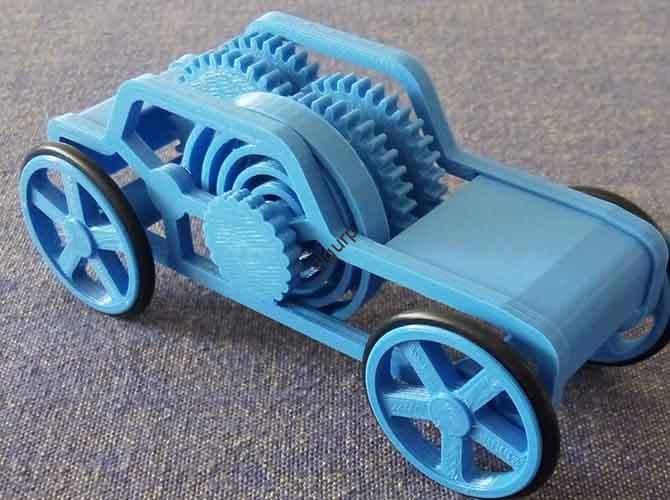In the fast-paced world of audio technology, users constantly seek headsets that fit perfectly, look unique, and deliver top-notch performance. But traditional manufacturing methods often fall short—until 3D printing headsets emerged. This innovative technology is changing the game by solving key pain points like poor fit, limited design, and long production waits. Lassen Sie uns untersuchen, wie es funktioniert, seine Kernvorteile, and why it matters for both users and brands.
1. Personalisierung: Tailored to Your Ears, Not One-Size-Fits-All
The biggest frustration with most headsets? They never fit quite right. Loose over-ears slip during workouts, and ill-fitting in-ears cause discomfort after 30 Minuten. 3D printing headsets fix this by creating custom molds based on your unique ear shape.
Wie es funktioniert (Schritt für Schritt):
- Use your smartphone to scan your ears (Keine besonderen Ausrüstung benötigt).
- The scan is converted into a 3D digital model.
- A 3D printer builds the headset’s earcups or in-ear tips to match the model exactly.
Beispiel für reale Welt:
Sennheiser, a leader in audio, partnered with Formlabs to launch their AMBEO customized headset solution. Users scan their ears via a phone app, and the 3D-printed in-ear tips fit so precisely that they:
- Block 20% more external noise than standard in-ears.
- Eliminate discomfort during 2+ hour listening sessions.
- Enhance sound immersion by creating a tight acoustic seal.
2. Komplexe Designs: What Traditional Molding Can’t Do
Traditional injection molding struggles with intricate shapes—think hollow structures, gekrümmte Kanäle, or lightweight frameworks. 3D printing headsets break these limits, letting designers turn bold ideas into reality.
3D Druck vs. Traditional Molding: Design Capabilities
| Besonderheit | 3D Printing Headsets | Traditional Injection Molding Headsets |
| Komplexe Formen | Handles hollow, Gitter, or organic designs | Limited to simple, gleichmäßige Formen |
| Designflexibilität | Adjust designs in software (keine Schimmelveränderungen) | Requires new molds for every design tweak |
| Gewichtsreduzierung | Creates lightweight structures (Z.B., 15g in-ears) | Schwerer (often 25g+ in-ears) due to mold constraints |
Fallstudie: Haige Technology x Enron Wired Headphones
Their joint 3D-printed headset uses an innovative hollow earcup design—something impossible with traditional molding. The hollow structure cuts weight by 30% while maintaining durability, making it ideal for all-day use.
3. Produktion & Prototyping: Schneller, Billiger, Smarter
Für Marken, time is money. Traditional headset production can drag on for months, Aber 3D printing headsets slash lead times and costs—especially for small batches or prototypes.
Schlüsselkennzahlen: Produktionszyklusvergleich
| Bühne | 3D Printing Headsets | Traditional Headsets |
| Schimmelentwicklung | No molds needed | 4–6 Monate (mold opening + Reparaturen) |
| Total Production Time | 1–2 months | 7–8 months |
| Prototyping Speed | 1–2 Wochen (pro Design) | 4–5 Wochen (pro Design) |
Why This Matters for Brands:
- Startups can test 5+ prototype designs in a month (vs. 1 mit traditionellen Methoden).
- Small brands avoid $10,000+ mold costs for limited-edition headsets.
4. Materielle Vielfalt: Pick What Fits Your Needs
3D printing headsets aren’t limited to cheap plastic. You can choose materials based on comfort, Haltbarkeit, or sound quality—something traditional manufacturing rarely offers.
Common 3D Printing Materials for Headsets
| Material | Am besten für | Schlüsselvorteil |
| Soft TPU | In-ear tips | Hypoallergenic (no ear irritation) |
| Lightweight PLA | Over-ear cups | Affordable and eco-friendly |
| Edelstahl | Headset frames | Ultra-dauerhaft (dauert 5+ Jahre) |
| Keramik | Premium in-ears | Glatte Textur + noise isolation |
5. Ökologische Nachhaltigkeit: Weniger Abfall, More Responsibility
Traditional manufacturing cuts and shapes materials, leading to 30–40% waste. 3D Druck is additive—it only uses the material needed, Verschwendung zu schneiden 5% or less.
Quick Facts:
- A single 3D-printed headset uses ~15g of plastic (vs. 25g for traditional, due to trimming).
- Most 3D printing materials (wie pla) sind biologisch abbaubar.
- Brands can recycle unused material for future prints.
Perspektive der Yigu -Technologie
Bei Yigu Technology, Wir glauben 3D printing headsets are more than a trend—they’re the future of user-centric audio. Our R&D team has tested 3D-printed prototypes with 500+ Benutzer, Und 92% reported better fit than their current headsets. Für Marken, 3D printing lowers entry barriers (Keine Schimmelpilzkosten) and lets them focus on innovation. We’re excited to partner with audio brands to launch affordable, custom 3D-printed headsets in 2025—making personalized audio accessible to everyone.
FAQ
- Q: How much does a 3D-printed headset cost?
A: For custom models, prices start at \(80 (vs. \)150+ for high-end traditional custom headsets). Mass-produced 3D-printed headsets may cost as little as $30.
- Q: Are 3D-printed headsets durable?
A: Yes—if made with materials like stainless steel or reinforced PLA, they can last 3–5 years, just like traditional headsets. Soft parts (Z.B., TPU tips) can be easily replaced.
- Q: Can I customize the color or pattern of my 3D-printed headset?
A: Absolut! Most 3D printers support colored filaments, and you can add patterns (like stripes or logos) directly in the design software.
